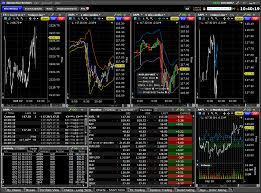
Exchange traded funds (ETFs) are among the most popular financial instruments that investors add to their portfolios for exposure and diversification. Rather than having to research and analyse individual stocks, you can track the performance of a group of stocks or an index, as well as trade commodity funds by investing in ETFs. Even if the investor is not utilizing margin, the $25,000 account minimum applies. Thereupon, you will be required to maintain a $25,000 account minimum, or face restrictions on trading. VOO tracks the popular S&P 500 Index, which represents the top 500 companies in the U.S. from diverse sectors.
Can you day trade with $2000?
If you are a trader who occasionally executes day trades, you are subject to the same margin requirements as non-day traders. This means you must have a minimum equity of $2,000 to buy on margin.
The probability that you know something professional investors do not — without it being illegal insider information — is extremely unlikely. Investors with long-term holdings are well-positioned to diversify their investments and mitigate the risk of large losses. Day traders who buy and sell just a few popular stocks have portfolios that are much less diversified, so the movements of any one stock have a much larger impact on their financial health. Short selling is a high-risk strategy that involves borrowing a financial instrument or security to sell it. Short selling ETFs carries lower borrowing costs than individual assets and lower risk of a short squeeze, when a heavily shorted asset price spikes higher as traders are forced to cover their positions. Currency exchange traded funds track a single currency or a basket of currencies, such as the US Dollar Index (DXY).
What is ETF trading?
We like day trading SPY because it ranks for the largest AUM, and it has the largest trading volume. SPY ETF tracks the performance of the most popular stock index in the world, the S&P 500. Volatility ETFs and ETNs usually have larger price swings than the S&P 500, making them ideal for day trading. The greatest opportunities (in terms of percentage price moves) come during, and shortly after, the S&P 500 has significant declines. A volatility ETN, such as the iPath S&P 500 VIX Short-Term Futures ETN, may even foreshadow what the S&P 500 is going to do next.
That’s the case for day trading stocks but also if you day trade ETFs. Leverage amplifies gains and losses, so it is important not to use too much leverage on any single position. This could result in significant financial loss should the market turn against you quickly. The following table lists the top 100 most heavily traded exchange-traded products, highlighting the funds that will generally be the most liquid. Generally, ETFs with the highest average volume are used widely as trading vehicles among active traders. The figures below reflect the average daily trading volume for each ETF over the previous three month period; this metric is less susceptible to daily fluctuations than is the normal daily volume metric.
How To Trade ETFs
Due to the volatile nature of exchange-traded funds (ETFs), they are the perfect candidate for day trading. When combined with the right strategy, day trading ETFs can be one of the best and safest ways to generate profits in the market consistently. An ETF exchange-traded fund can provide you with very lucrative short-term opportunities. However, the odds of making any money by gambling on day trading ETFs are very low.
How to day trade without $25,000?
Because of the PDT rule, traders without 25k are not allowed to day trade using margin. A cash account solves this problem. All transactions clear overnight and your funds are available the next trading day. Unfortunately, cash accounts cannot take spread trades, however, they are perfect for directional trading.
Transparency is how we protect the integrity of our work and keep empowering investors to achieve their goals and dreams. And we have unwavering standards for how we keep that integrity intact, from our research and data to our policies on content and your personal data. In light of these considerations, it makes sense to wait about 15 minutes https://forexhero.info/page/7/ after the opening bell to trade an ETF and to avoid trading during the 15 minutes leading into the market’s close. Get stock recommendations, portfolio guidance, and more from The Motley Fool’s premium services. Volatility profiles based on trailing-three-year calculations of the standard deviation of service investment returns.
Leveraged ETF
New ECNs arose, most importantly Archipelago (NYSE Arca) Instinet, SuperDot, and Island ECN. Archipelago eventually became a stock exchange and in 2005 was purchased by the NYSE. People on social media occasionally tout the large profits they collect from big, one-day bets made on speculatively held stocks. What’s better than buying a few hot stocks, waiting an hour or two, and then making more than $100,000? ETFs offer investors a simple way to hedge their portfolios against downside risk. They are one of the easiest ways to invest in commodities like precious metals, which provide a hedge against economic uncertainty, rising inflation and low interest rates.
- Market BasicsStocks & ETFsThe day trading rules will affect your buying power.
- You would do this over and over again as long you believe that the stock price would stay in this range.
- Brokers are mandated by law to require day traders have $25,000 in their accounts at all times.
The only potential cost of using limit orders is an incomplete execution. It may take longer for a limit order to be filled than a market order, or the market could move away from the order’s limit price, leaving it unfilled. These costs need to be weighed against the cost of being exploited by an opportunistic market maker looking to pick off market orders in thinly traded ETFs—an occurrence that is all too common. In the late 1990s, existing ECNs began to offer their services to small investors.
How to day trade ETFs
For those of you who’ve traded individual stocks, likely found themselves stuck in a situation where you can’t unload shares due to low volatility. If you’ve ever traded an individual stock, then buying and selling an ETF will feel familiar because it’s traded the same way. Once again, you’ll need a trading platform and a brokerage firm to trade them. And in case you didn’t know, ETFs trade on both the NYSE and NASDAQ. Provided that only authorized participants can trade creation units, retail shares are what’s left for us. Retail ETF shares are listed on the Exchange to be bought and sold by regular traders/investors like you and I.

Can you start day trading with less than 25k?
One of the most common requirements for trading the stock market as a day trader is the $25,000 rule. You need a minimum of $25,000 equity to day trade a margin account because the Financial Industry Regulatory Authority (FINRA) mandates it. The regulatory body calls it the 'Pattern Day Trading Rule'.


Social Links: